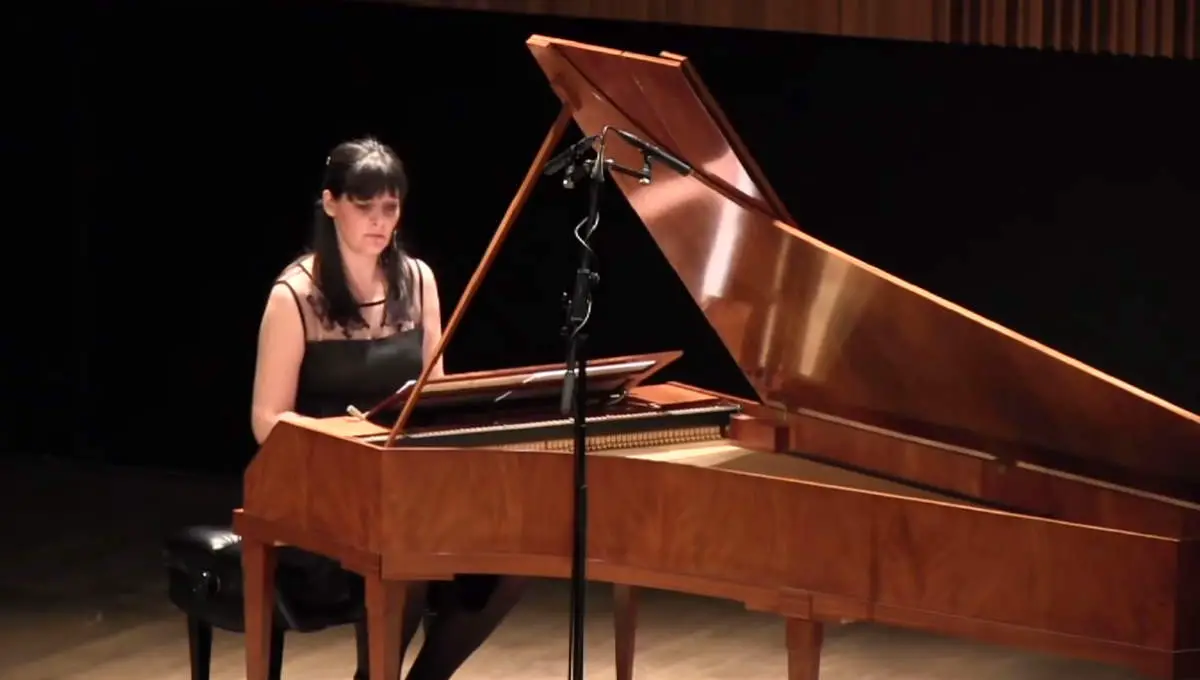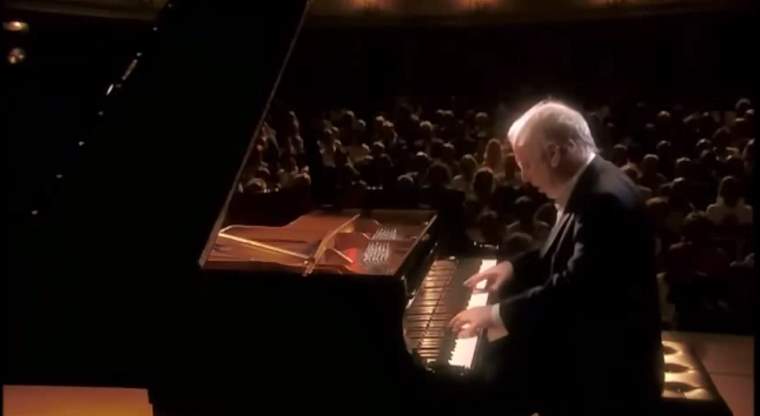Romanian-born Canadian classical pianist Ruxandra Oancea performs Ludwig van Beethoven’s Three Sonatas Op. 31 (Piano sonatas No. 16, 17, and 18) on fortepiano.
Ludwig van Beethoven’s Three Sonatas Op. 31, programme
With start times in the video:
Piano Sonata No. 16 [02:55]
Piano Sonata No. 16 in G major, Op. 31, No. 1, was composed between 1801 and 1802. Although it was numbered as the first piece in the trio of piano sonatas which were published as Opus 31 in 1803, Beethoven actually finished it after the Op. 31 No. 2, the Tempest Sonata.
Movements:
- Allegro vivace 2/4 in G major. The first movement begins in an animated fashion. The humorous main theme is littered with brisk, semiquaver passages, and chords written in a stuttering fashion, suggesting that the hands are unable to play in unison with one another. The second subject in the exposition alternates between B major and B minor; this tendency to alternate between keys became typical later in Beethoven’s career.
- Adagio grazioso 9/8 in C major. With long, drawn out trills and reflective pauses, the second movement in C major is the more sentimental movement. Apart from the Hammerklavier Sonata’s Adagio and the 32nd sonata’s second movement, this is the longest slow movement of Beethoven in the piano sonatas (around 11 minutes). According to many great pianists (e.g. Edwin Fischer and András Schiff), this movement is a parody of Italian opera and Beethoven’s contemporaries, who were much more popular than Beethoven at the beginning of the 19th century. Schiff explained this theory in his master class of this sonata; he said it is totally uncharacteristic of Beethoven because it is not economical, it is incredibly long, everything is too much ornamented, it is filled with “show-off cadenzas (…) who are trying to make a cheap effect” and bel canto-like elements and rhythms (on them Schiff said “it’s very beautiful, but it’s alien to Beethoven’s nature”.
- Rondo, allegretto – presto 2/2 in G major. The finale is similar in character to the first movement: light, enthusiastic, and youthful. Here, a single simple theme is varied, ornamented, syncopated, modulated throughout the piece. After a brief Adagio section, the piece ends with a Presto coda.
Piano Sonata No. 17, “The Tempest” [28:00]
Composed in 1801-02, the piece is usually referred to as The Tempest (or Der Sturm in his native German). It is not a name by Beethoven himself but by the Austrian law clerk and associate Anton Schindler (1795-1864), or rather because of Anton Schindler. Schindler was Beethoven’s secretary and after the composer’s death, he told tons of stories, many of them not true (much of Schindler’s information is distrusted by classical music scholars).
According to Schindler, when he asked Beethoven about this sonata, the answer was that if he read Shakespeare’s “The Tempest” he would understand the music.
Movements:
- Largo – Allegro. The first movement alternates brief moments of seeming peacefulness with extensive passages of turmoil, after some time expanding into a haunting “storm” in which the peacefulness is lost. This musical form is unusual among Beethoven’s sonatas to that date. Concerning the time period and style, it was thought of as an odd thing to write; a pianist’s skills were demonstrated in many ways, and showing changes in tone, technique, and speed efficiently many times in one movement was one of them. The development begins with rolled, long chords, quickly ending with the tremolo theme of the exposition. There is a long recitative section at the beginning of this movement’s recapitulation, again ending with fast and suspenseful passages.
- Adagio. The second movement in B-flat major is slower and more dignified. It mirrors the opening of the first movement both through the use of a rolling recitative-like arpeggio on the first chord, and the rising melodic ideas in the opening six measures, which are reminiscent of the first movement’s recitative. Other ideas in this movement mirror the first, for instance, a figure in the eighth measure and parallel passages of the second movement are similar to a figure in the sixth measure of the first.
- Allegretto. The finale of Beethoven’s Piano Sonata No. 17 is a sonata-rondo hybrid in the key of D minor. It is at first flowing with emotion and then reaching a climax, before moving into an extended development section which mainly focuses on the opening figure of the movement, reaching a climax at measures 169-173. The recapitulation, which is preceded by an extensive cadenza-like passage of sixteenth notes for the right hand, is followed by another transition and then another statement of the primary theme. The refrain undergoes phrase expansion to build tension for the climax of the movement at measure 381, a fortissimo falling chromatic scale.
Piano Sonata No. 18 [51:18]
This sonata was composed in 1802. A third party gave the piece the nickname “The Hunt” due to one of its themes’ resemblance to a horn call. Beethoven maintains a playful jocularity throughout much of the piece, but as in many of his early works, the jocular style can be heard as a facade, concealing profound ideas and depths of emotion.
Movements:
- Allegro.
- Scherzo. Allegretto vivace.
- Menuetto. Moderato e grazioso.
- Presto con fuoco.
Sources
- Piano Sonata No. 16 (Beethoven) on Wikipedia
- Piano Sonata No. 17 (Beethoven) on Wikipedia
- Piano Sonata No. 17 (Beethoven) on Wikipedia
- Pavarotti sings Pourquoi me réveiller [Massenet] at the Central Park in 1993 - April 23, 2024
- Elgar: Serenade for Strings [Concertgebouw Chamber Orchestra] - April 19, 2024
- Mozart: Serenade No. 10 “Gran Partita” [MET Orchestra Chamber Ensemble] - April 18, 2024


Quelle aisance! Magnifique de revivre l’époque de Beethoven sur un piano d’époque par une pianiste qui nous fait voler avec son ressenti musical. Merci Ruxandra Oancea pour ce concert si vivifiant.